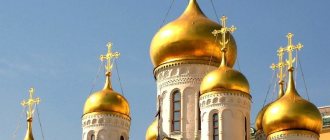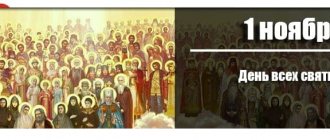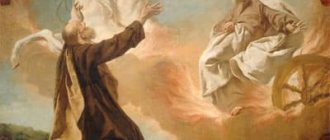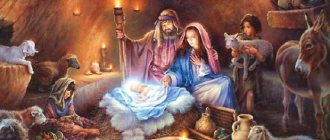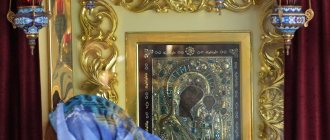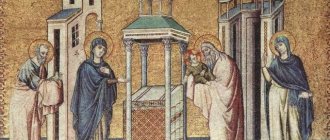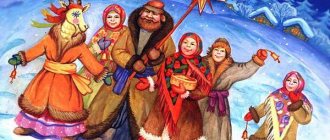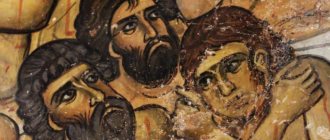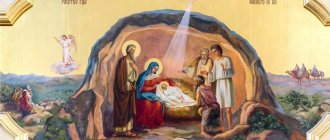The Nativity of Christ is one of the main holidays celebrated by Orthodox Christians on January 7 according to the new style.
It was erected in honor of the birth of Jesus Christ in the form of a man from his earthly mother, the Virgin Mary. Orthodox Christians celebrate it on the night of January 6-7. The day of the week varies depending on the year.
The main dish this evening is kutia, but in addition to this, 12 dishes decorate the Christmas table. It is very important to know the traditions and customs of the holiday, I suggest we talk about this in more detail.
The holiday is preceded by fasting, which lasts 40 days - from November 28 to January 6.
Christmas - the history of the holiday
On this day, all Christians of the world glorify the birth of the Savior, which is written about in detail in the Gospel of Luke and Matthew. All the righteous who honored the Old Testament were waiting for the Messiah and saw the prophecies that foreshadowed his appearance.
The Savior had to save humanity from original sin and reconcile people with God.
The pregnant Virgin Mary and her husband Joseph, who was chosen to guard her purity, walked to the city of Bethlehem. They stopped for the night in a cave where shepherds drove their cattle during bad weather.
It was here, in squalor and without amenities, that the Savior was born, and his first bed was a sheep feeder.
The first to know about the birth of Christ were simple shepherds. They heard the singing of angels and came to the cave to worship the Messiah. Next came the Magi, who saw an unusually bright star in the sky and realized that the Great Prophecy had come true.
At this time, Herod ruled Rome. Angry and suspicious, he feared the coming of Christ. In order not to lose power, he planned to kill the born Baby.
At first, Herod summoned the wise men for questioning, but they were warned by angels about the ruler’s plan. Without waiting for the Magi, he ordered the destruction of all children in the vicinity of Bethlehem. According to the Bible, 14,000 babies under the age of 2 were killed that night.
Mary's husband knew about the impending crime and took his wife and Jesus to Egypt. After the death of Herod, they returned to Nazareth, where the Savior spent his childhood.
Reference! At the birthplace of the Messiah, one of the oldest existing churches was built, which was called the Basilica of the Nativity. The temple was founded at the beginning of the 3rd century by the mother of Emperor Constantine the Great, Helen.
How are the names of the Magi known if the Bible does not say so?
The names of the wise men who brought gifts to the Baby Jesus: Melchior, Caspar, Belshazzar. Their names are not mentioned in the Gospel, but are first found in St. Troubles of the Venerable (†735). There is also an opinion that these three wise men represented three ages and three branches of humanity: Melchior - an old man, a Simite, Caspar - a young man, a descendant of Ham, Belshazzar - a mature descendant of Japheth. In addition, there is an assumption that there were not three Magi, but more (in particular, this assumption finds basis in early Christian art, in subjects associated with the Nativity of Christ and the worship of the Magi).
When is Christmas celebrated on December 25 or January 7?
Until the 4th century, people professing Christianity celebrated the Nativity of Christ on January 6, together with Epiphany. On this day, other great events were also remembered by the sages from the East.
They came to worship the baby Jesus, Christ performed the first miracle (he made wine from water), the Messiah showed his power and did not let people die of hunger, turning a small amount of food into a large one.
There are several opinions regarding the establishment of the holiday. Some believe that Christmas was set on the same day as the pagan celebration of the Day of the Sun at the end of the 2nd century. According to other scientists, the holiday appeared during the reign of Constantine I at the beginning of the 3rd century.
Christmas began to be celebrated separately from Epiphany at the end of the 4th century under Emperor Arcadia. The day of celebration was December 25th. But even today, services in honor of these two events are similar. Each of these holidays is preceded by Christmas Eve, when it is customary to refuse food until the first star appears in the sky.
Today, Catholics and Protestants celebrate Christmas on December 25th. Orthodox Christians honor the great event of January 7th. In Russia this day is a day off.
Serving the stars
Perhaps, at first glance, the story of the wise men and the star seems like a fairy tale. Many critics of the Gospel argued that this was a later insertion into the Holy Scriptures, made by the Greeks in order to embellish and mythologize the event of Christmas, which the evangelists spoke very sparingly about. But if we accept this point of view, then nothing can be said about the life of Christ, because almost everything we know about the Savior is told in the Gospel. But if there was still a Star, there were Magi, then what is the meaning of their appearance at the time of the birth of Jesus?
Author of the photo: Olga Ryndina.
Who are the “magi”? Who were these people and how does the Gospel relate to them? In the Greek text they are called magicians. Herodotus, for example, writes that this was the name given to the Medes, who belonged to the priestly caste of the Persian Empire. Perhaps they were Zoroastrians who interpreted dreams; in addition, they were astrologers, sages who were said to have supernatural powers. The Gospel says that the Magi came “from the east.” Persia, Babylon, Arabia and Egypt may fit this definition. However, ancient church tradition calls Persia the homeland of the Magi on the grounds that the prophet Daniel lived in this country for a long time (VI century BC). Moreover, he was there “the head of the wise.” Perhaps he left his subordinates with knowledge of the biblical God and the expected Messiah. And this knowledge was passed on from generation to generation.
Many people, both now and in ancient times, believe and believed that the fate of a person is determined by the stars. The Greco-Roman world firmly believed that the birth or death of great people, political changes were preceded by the appearance of stars or comets. So the Magi, seeing the Star of the Messiah, go to Judea to worship Him. According to the Gospel, the Star guides them. What versions have not been put forward over 2000 years to explain the vision of the Magi!
Astronomer Johannes Keppler in the 17th century suggested that the Star of Bethlehem is a “parade of planets,” that is, they come so close that the visual effect of one bright star is created. On December 17, 1603, he observed the conjunction of Jupiter and Saturn in the constellation Pisces. And in the spring of 1604, Mars joined them. Keppler suggested that a similar phenomenon occurred in 7-6 AD. BC
There was an assumption that the Star of Bethlehem is nothing more than Halley's Comet. The Roman historian Cassius Dio wrote about the appearance of the comet. However, Cassius' message dates back to 742 from the founding of Rome. It turns out 12 BC, that is, too early for the gospel events. Finally, in our time, American astronomers have suggested that the Magi observed a supernova or the birth of a new star in the constellation Capricorn in the spring of 5 BC. This theory seems interesting, given the data of Chinese chronicles, which date this event specifically to 5 - 4 years. BC. However, all these theories have one thing in common - the denial that the Star could guide the Magi.
For example, Keppler explained the words of the Evangelist Matthew that “the star which they saw in the east walked before them until at last it came and stood over the place where the Child was,” approximately as follows. The Gospel conveys the impression that the magicians formed when they constantly focused on the Star on the way from Jerusalem to Bethlehem, that is, simply an optical illusion. And further:
“The Bible speaks to people about the subjects of human life in the same language in which they are accustomed to speak. It is not a textbook of optics or astronomy, but has higher goals in mind.”
Indeed, the Bible is not an astronomy textbook. That is why most interpreters of the Gospel, fathers and teachers of the Church believe that the Star of Bethlehem was such only in appearance, but in fact it was a special star created by God. The opinion of St. stands apart. John Chrysostom, who said that the Magi were led by an Angel who appeared in the form of a star. Christian authors proposed such versions, firstly, based on the message of the Evangelist Matthew that the star walked in front of the Magi and stopped immediately in front of the nativity scene. Secondly, her “strange” behavior in Jerusalem, when the simple-minded wise men came there to find out: “Where is he who has been born King of the Jews?” The star simply disappeared from them, and at the same time from those who “sought to destroy the Child.” That is, she behaved very unusually for a natural phenomenon - when necessary, she appeared, and then disappeared again.
Why has the Church always insisted on the miracle of the Star of Bethlehem? Couldn't this have been a natural phenomenon?
Yes, of course it could. But the Church, when speaking about the supernatural nature of a star, does not mean a conflict between science and faith. The point is the Christian vision of Christmas as a miracle. And the miracle of the Star of the Messiah in the church consciousness is identical to the miracle of the birth of the God-man. Persian pagan sages go to the small village of Bethlehem, located in little Judea, almost on the outskirts of the Roman Empire, to worship the Savior, Who was born here. What brings them here is mere chance? No. The Magi are brought here by the miracle of the birth of the God-Man. The astrologers could not have come to Bethlehem by accident. This is precisely the main pathos of the gospel story about the Star.
Therefore, it is useless to speculate about the nature of the Star. Whatever it is, it was sent from God so that the pagans would recognize and worship the Messiah. Even if Johannes Keppler is right and the Persian sages observed a “parade of planets” or the birth of a new star, what does this contradict? Really, having learned that it was not a star, but an Angel leading them to the manger of the Infant God, would they turn around and go back to their astrolabes? The Magi did not follow a star, they were heading to the King of the Jews, to the Savior. Moreover, they were not embarrassed when they found Him not in the royal chambers, but in a wretched den - a cave where animals are hidden in bad weather. That is, at first they accepted the Star of the Messiah itself as a miracle revealed to them, believed it, and then they followed it. This is probably why they found their Savior...
The history of Christmas - briefly for children
Children often ask the question, who is Jesus, where and how was he born? Here is a short story for general development and understanding.
Jesus is the son of God, who was born as a man on Earth and lived among ordinary people. He was sent to save humanity from destruction and deliver from sins - past and future. The holiday of Christmas is the birthday of God's son.
Christ's earthly parents were Joseph and Mary. The real father of the Savior is the Holy Spirit, from whom Mary bore through the virgin birth. Joseph was a widower. And he had a vision from which he learned that he must raise and educate Jesus.
Now, after meeting the main characters, we can tell the story of the birth of the Savior in a cave and the appearance of the Star of Bethlehem in the sky, which led the wise men to the Baby.
This is interesting! After the birth, Mary placed the child in a manger. This is a sheep feeder filled with hay. A nursery was named after her - a children's institution where children go from one and a half to 3 years old.
How accurately is the year when Christ was born known?
The year of birth of Jesus Christ today is to a certain extent arbitrary. This date was established by the Roman archivist, the monk Dionysius the Lesser in 525, by counting the stages of the reign of various Roman emperors and consuls. According to his calculations, the Savior was born in 754 from the founding of Rome. Later, a more detailed check showed that Dionysius’s calculations turned out to be erroneous. In fact, Jesus Christ was born about five years earlier than indicated by the archivist. However, his calculations, which formed the basis of the “church calendar,” from the 10th century became widespread in the chronicles of state chronology of Christian countries (as continues to this day). Today it is believed that 749 is the most optimal and historically substantiated date for the Birth of Jesus Christ, which does not contradict either the Gospel narrative or secular chronicles.
Traditions and customs of Orthodox Christmas
The holiday has symbolism:
- the main symbol is a Christmas tree decorated with a star;
- great gifts - gold and biblical aromas (incense and myrrh), which were presented by the Magi to the Baby Jesus;
- figurines of Angels and bells remind us of how the shepherds learned about the birth;
- candles symbolize the radiance of joy.
Christmas is preceded by a 40-day fast. This is a time of spiritual and physical cleansing, preparation for great events. January 6 – Christmas Eve.
On this day there is a special mood - anticipation of the holiday. Christmastide begins and continues until Epiphany.
Orthodox Christians spend Christmas Eve in strict fasting. It is customary to refuse any food until the first star appears in the sky. This tradition is connected with the story of the Star of Bethlehem, which announced the birth of the Savior.
A solemn service takes place all night, which is broadcast on central channels. The ringing of bells tells of the joy of the birth of Jesus. Churchgoers say: “Christ was born!”, and in response they must say: “We glorify him!”
Christians spend Christmas in a narrow circle - with relatives and closest friends. On this day it is customary to exchange gifts - in memory of the wise men who gave gifts to Christ on the night of his birth.
In churches and houses, models of caves with figurines of Mary and Joseph and the Baby sleeping in a manger are installed. Since the end of the 19th century, there has been a tradition of sending each other Christmas cards.
Historical truth
By the 10th century, the “Dionysian era,” at first used only for church needs, became civil in the West. And in 1582, Pope Gregory XIII slightly corrected the chronology of Julius Caesar (hence the name “Gregorian calendar”). What logic was he using? The average length of a year in the Julian calendar is 11 minutes 14 seconds longer than the tropical year (the length of the Earth's revolution around the sun). For one and a half thousand years, since the Nativity of Christ, the real astronomical days of the winter solstice and spring equinox have shifted almost 10 days back compared to the Julian calendar, and Gregory XIII decided to put them in their place. However, the Orthodox Church retained the Julian calendar. That is why Orthodox and Catholics now celebrate Christmas on different days. However, for the convenience of believers, the Local Orthodox Churches of Greece, Romania, Bulgaria, Poland, Syria, Lebanon, and Egypt also switched to the Gregorian calendar. Parishes of the Russian Orthodox Church in Western Europe also have permission to celebrate Christmas according to the Gregorian calendar, that is, together with their peoples.
Author of the photo: Anna Vavilova.
Can we follow the lead of the entire civilized world? If we were to check the liturgical circle according to the astronomical calendar, then Christmas should have been celebrated long ago on December 21 - it was on this day that the winter solstice had already shifted. Why again check the time of the Nativity of Christ with astronomers, if everyone has long forgotten about Saturn and Mithras? For the sake of “historical truth”? But here we again return to where we started - the Gospel does not say a word about the date of Christmas. It only says that Christ was born.
This is the historical truth, and at the same time the amazing freedom given to man by God - to accept or not accept this fact. After all, the miracle of Christmas is not that Christ was born exactly on the day of the winter solstice in order to facilitate the work of Christian missionaries to eradicate paganism, but that God, having become a man, gave man the opportunity to become different, to change. And if we do not accept this fact, then is there a difference on what date Christ was born - on the day of the winter solstice or a couple of weeks later? Does it make any difference whether the Magi came to Christ with gifts or not?.. Was they led by the Star, or did they accidentally stumble upon a cave with the Holy Family?..
Christmas table - what traditional dishes are prepared?
The main dish of Christmas is juicy. Prepared from wheat grains, dried fruits, honey and nuts. In our country, wheat has long been replaced by rice, and the dish is called kutya.
The second most important thing is the brew. It is made from dried fruits and honey is added instead of sugar. You can take herbs - mint, oregano, thyme, raspberry and currant leaves.
They are poured with boiling water and infused. They break their fast with juice and broth - this is the first thing to eat after the first star.
After eating the savory food, meat dishes, fatty fish, pies and all kinds of desserts are served. It would be good if there were 12 dishes on the festive table, symbolizing the Apostles - disciples of Christ.
It is customary to cook goose or turkey as the main dish. They are stuffed to your liking and baked in the oven. Be sure to make jellied meat and put homemade pickles on the table. For dessert they bake cookies in the form of figures, gingerbread cookies, and cupcakes.
Is it a sin to sing Christmas carols?
The celebration of the Nativity of Christ has been associated with folk customs since ancient times. These include singing carols. As a rule, carols do not have a single author; they are often imperfect literary, but magnificent in their semantic structure, sincerity and joyful kindness. Usually, a carol is a small Christmas story about the greatest event, glorifying the main persons of that night, which brought the most important, joyful news - the Savior of the world was born.
What ceremonies and rituals were performed in Rus'?
On Christmas Eve at sunset, all household members, led by their elders, began to pray. Then they lit a candle and attached it to a loaf of bread.
Hay or straw was placed in the front corner under the icons, covered with a snow-white tablecloth, on which they placed a sheaf of wheat and juice. After all the preparations, they resumed their prayers, and at the end they sat down at the table.
Reference! All these items were considered an indispensable attribute of Christmas. Straw and wheat symbolize the awakening of the forces of Nature; sochivo means fertility.
The first meal after fasting took place in silence. But the peasants had several rituals:
- they told fortunes about the future harvest by plucking straws from a sheaf of wheat;
- the children sat under the table and squeaked like chickens so that the family would have chickens.
The remains of the kutya were distributed to neighbors who lived in poverty. After dinner, carols began. Young people walked around the courtyards, sang songs, glorified the birth of Christ, and congratulated them on the great holiday. For this, the owners of the house must give money or treat the carolers.
Here are some simple verses for carols that even children can remember:
- Kolyada, Kolyada, we open all the houses, all the windows, chests, give sweets and pies. For your benefit, say thank you to heaven, God will give us all health, because he is capable of this.
- Today we will dance and dance for you in your house! We invite everyone to our Christmastide, games and riddles await you. Fortune telling, dancing, laughter await, there are enough jokes here for everyone!
- If you don't give me a cheesecake, you'll get hit on the top of my head! If you don’t give me the pie, I’ll take the cow by the horns!
Housewives do not sweep dirty linen from their huts for a week after Christmas Eve, and the garbage collected during this time is then burned on the street. On Christmas night, peasants went out into the fields and looked at the sky. It was believed that believers could see heavenly beauties.
This is interesting! For non-Christians, the holiday of the Nativity of Christ is associated with feasting, giving various gifts and making wishes.
Why do storks bring children and put a pig on the table?
One of the European Christmas legends says that a variety of animals and birds served the infant Christ in a manger. The calf warmed him with its breath, the cat calmed him with her purrs, and the dog guarded the entrance to the nativity scene. The stork also served his Lord, additionally insulating the manger of the Divine Infant with feathers from his chest.
In gratitude for this, Christ named the stork “the blessed bird and friend of all children,” giving him the honorable duty of delivering them to their parents.
In the most popular versions of the legend, the stork brings a baby rocking in a swaddle, the ends of which he holds in his beak, or in a basket attached to his back. Delivery can be directly into the hands of the mother, or into the chimney. If the future parents are sleeping, then the feathered postman can lightly pinch the mother's leg.
Storks are revered as an example of a model family. According to the same legend, these are the only birds that not only never change partners, remaining faithful to their choice all their lives, but also take care of their elderly parents, supporting them in flight and feeding them on the ground.
Another legend that takes us back to the Bethlehem manger concerns the Christmas pig. According to legend, it is eaten... as punishment for disrespect.
In “The Summer of the Lord” by the writer Ivan Shmelev, it is described as follows: “They are ordered to eat them on Christmas as a punishment! She didn’t let the baby sleep, she kept grunting. That's why it's called a pig. He wanted to stroke her, but she, a pig, pricked his hand with a bristle.”
That’s why at Christmas they serve a tender suckling pig with an apple in its teeth and parsley behind its ears.
Old Believer churches
The Old Believers did not accept the church reform of the 17th century, which proclaimed the unification of the liturgical order of the Russian Church with the Greek Church of Constantinople. This reform changed the texts of worship, created conditions for the seizure of church property in favor of the state, which caused a lot of discontent, a split in the Russian Church and the emergence of Old Believers.
Old Believers consider only themselves Orthodox Christians, and call everyone else heretics. The main temple of the Russian Orthodox Old Believer Church is the Intercession Cathedral in Rogozhskaya Sloboda. The temple is located in Moscow, founded in the 18th century. In 2022, there were about 200 Old Believer parishes in Russia. Almost all were destroyed by the Soviet regime.
Signs
In Rus', people believed a number of superstitions that were associated with Christmas:
- If it's frosty outside, the summer of the coming year will be hot.
- A thaw on Christmas night means cold weather in early spring.
- When it snows on Christmas Eve, there will be a lot of good news in the year.
- If the weather is clear, the harvest will be rich.
- When there is a new moon on Christmas Day, you shouldn't expect a harvest in the fall.
- If there is a lot of snow outside, a lot of honey will be collected.
Icons in Orthodoxy
In Christianity, the icon occupies an exceptional place. Few people know what the Bible says, people rarely visit temples, but in every house there is an image of the Savior. People turn their requests, prayers, and desires to an icon or a reproduction from an icon. The icon exists for prayer, which a person dedicates to God. In ancient times it was called the Bible for the illiterate.
From time immemorial, churches erected for prayer and glorification of God have been decorated with mosaics, frescoes and icons. Icons appeared in churches at the dawn of Christianity. The first images of Jesus Christ and the Virgin Mary were made during their lifetime. Once upon a time, Christians prayed in caves, the walls of which were already decorated with images of Christ.
In ancient times, the Savior was depicted as a shepherd holding a lost sheep - a sinful human soul. The Virgin Mary was painted with a baby in her arms. Ancient artists depicted the 12 Apostles, the birth of Christ, the feeding of people with 5 loaves and other episodes from Holy Scripture.
Images of saints help strengthen faith. The word “icon” translated from Greek means “image”. We are talking about the image of Jesus Christ. Thanks to the incarnation of Christ in the flesh, the invisible image of God became visible to people. With the help of icon painting, people were able to see the Savior and turn their prayers to him.
True, not every image on a religious theme is an icon. When painting icons, one must observe the dogmas of the church. Artists have the right to paint such icons that do not contradict the Christian religion. The image should show God in the form of a man. After all, man, according to Holy Scripture, was created in the image of God. The icon is a window to the spiritual world. A holy image is created in prayer and for the sake of prayer.
